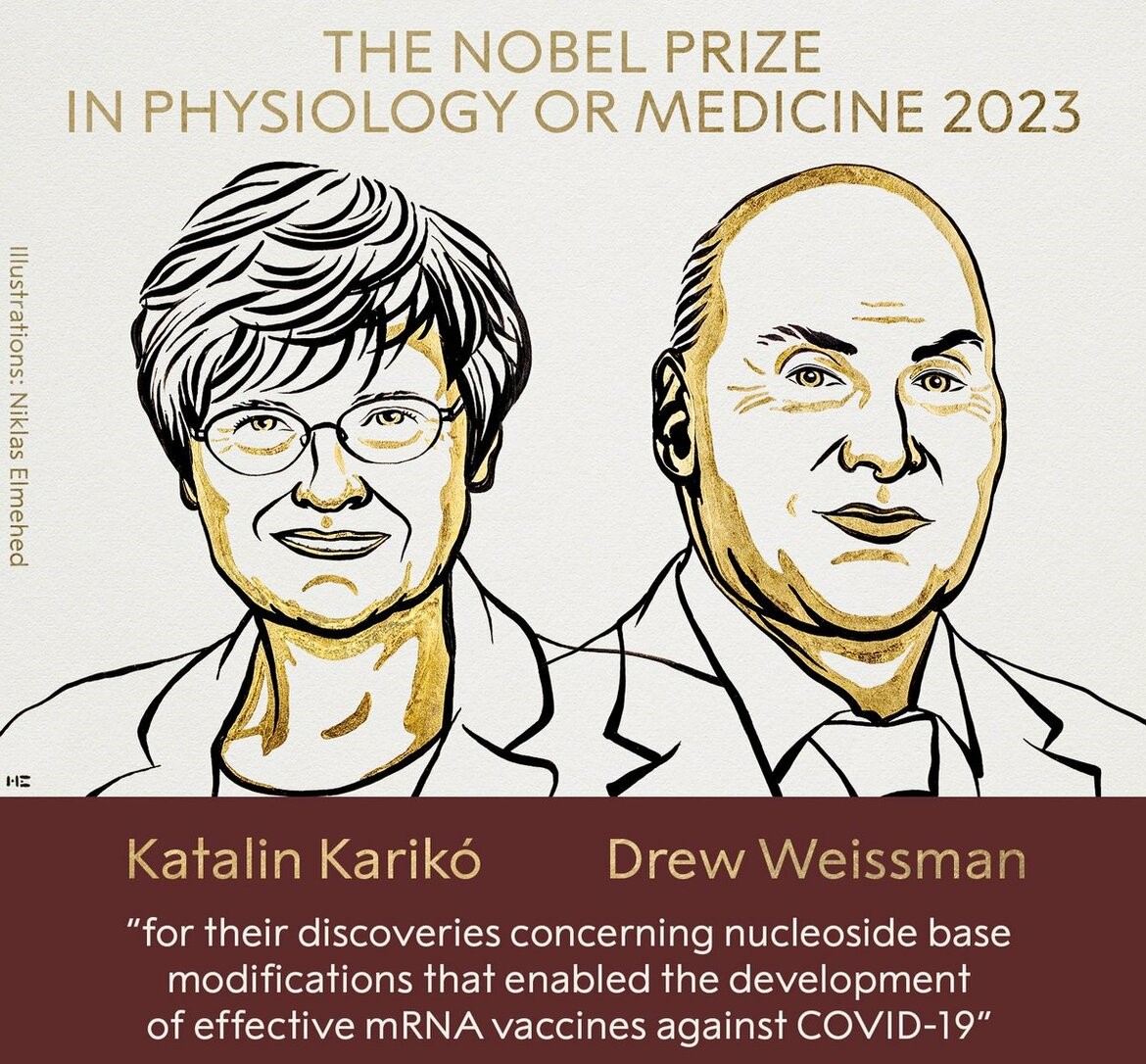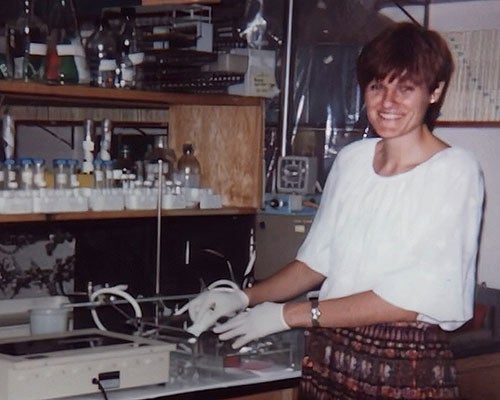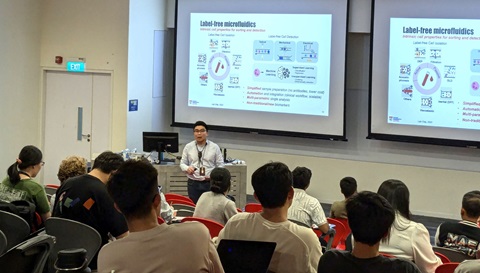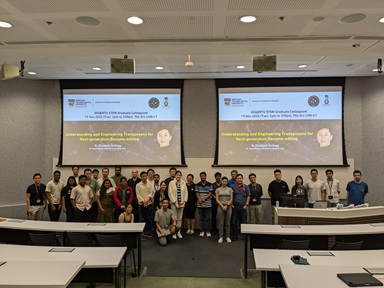2023 Nobel Prize in Physiology or Medicine: The Breakthrough Behind the Jab: Turning the Tide Against COVID-19
Assoc Prof Luo Dahai |Provost’s Chair in Medicine, Infection and Immunity, Lee Kong Chian School of Medicine, NTU
 © Nobel Prize Outreach. Illustrations: Niklas Elmehed
© Nobel Prize Outreach. Illustrations: Niklas Elmehed
In early 2020, the world came to a standstill. COVID-19, a novel coronavirus, had emerged into a global pandemic. Amidst growing uncertainty and fear, a beacon of hope emerged from the realm of science - hope that would soon be recognised with the 2023 Nobel Prize in Physiology or Medicine[1]. The prestigious prize was awarded jointly to Prof Katalin Karikó (Szeged University and University of Pennsylvania) and Prof Drew Weissman (Penn Institute for RNA Innovations, University of Pennsylvania) for their discoveries concerning nucleoside base modifications that enabled the development of effective mRNA vaccines against COVID-19.
The award celebrated a groundbreaking discovery in the field of molecular biology: nucleoside base modifications in messenger RNA (mRNA), a technology that became the cornerstone for developing effective mRNA vaccines against COVID-19 at unprecedented speed.
But what does this scientific jargon mean for us, the lay audience? Imagine your body's immune system as a highly trained army, ready to defend against invaders such as SARS-CoV-2 virus. The mRNA vaccines, stemming from this Nobel-winning research, act as a training program. They instruct host cells to produce the viral antigen, triggering an immune response without introducing the actual virus. This method's success hinges on modifying the mRNA nucleosides to evade the innate immune response, which otherwise degrade the mRNA or dampen its efficacy.
This discovery was not an overnight success but the culmination of decades of research, characterised by trials, errors, and perseverance. Prof Katalin Karikó and Prof Drew Weissman's pivotal work on modifying nucleosides in mRNA to evade the immune system [1,3] laid the groundwork for the mRNA vaccines developed by pharmaceutical companies, turning the tide in the fight against COVID-19. The significance of this technology extends far beyond the current pandemic. It opens new avenues for vaccine development against various diseases, from influenza to Zika, heralding a new era in medical science where responses to pandemics are swift, and vaccines are more readily adaptable.
 Prof Katalin Karikó, who knew from a young age that she wanted to become a scientist, working in her lab, 1985.[2]. Image credit: https://www.gatesnotes.com/Heroes-in-the-field-Katalin-Kariko
Prof Katalin Karikó, who knew from a young age that she wanted to become a scientist, working in her lab, 1985.[2]. Image credit: https://www.gatesnotes.com/Heroes-in-the-field-Katalin-Kariko

The original data showing nucleoside modifications suppress the potential of RNA to activate immune cells[3] .
In my laboratory at the NTU Lee Kong Chian School of Medicine, our team
has immersed itself deeply in the research area of RNA virus infection and host immune response. At the basic science level, we examine the molecular requirements for viral replication to effectively activate the RIG-I/MDA5 immune sensors
[4]. On the translational research level, my team develops immune-modulatory RNA molecules and small molecular compounds based on our findings. We are conducting proof-of-concept experiments on using
immRNAs to boost vaccine efficacy and to treat cancers, either as monotherapy or in combination with anticancer drugs with diverse modes of action [5,6,7]
.
In celebrating the 2023 Nobel Prize in Physiology or Medicine, we not only honour a remarkable scientific achievement but also embrace the hope and promise it brings for a healthier world.
For more information, watch the video on 2023 Nobel Prize in Physiology or Medicine.
References:
- https://www.nobelprize.org/prizes/medicine/2023/press-release/
- https://www.gatesnotes.com/Heroes-in-the-field-Katalin-Kariko
- Immunity. 2005 Aug;23(2):165-75. doi: 10.1016/j.immuni.2005.06.008.
- RIG-I-like receptors: Molecular mechanism of activation and signaling. Zheng J, Shi W, Yang Z, Chen J, Qi A, Yang Y, Deng Y, Yang D, Song N, Song B, Luo D. Adv Immunol. 2023;158:1-74. doi: 10.1016/bs.ai.2023.03.001. Epub 2023 May 9.
- Intranasal Delivery of RIG-I Agonist Drives Pulmonary Myeloid Cell Activation in Mice. Nair S, Wu Y, Nguyen TM, Fink K, Luo D, Ruedl C. Front Immunol. 2022 Jun 15;13:910192. doi: 10.3389/fimmu.2022.910192.
- Robust delivery of RIG-I agonists using extracellular vesicles for anti-cancer immunotherapy. Peng B, Nguyen TM, Jayasinghe MK, Gao C, Pham TT, Vu LT, Yeo EYM, Yap G, Wang L, Goh BC, Tam WL, Luo D, Le MT. J Extracell Vesicles. 2022 Apr;11(4):e12187. doi: 10.1002/jev2.12187.
- Immunomodulatory small hairpin RNA molecules. D Luo, K Fink, HY Yong, CYV Ho US Patent 11,499,157 https://patents.google.com/patent/US11499157B2/en







